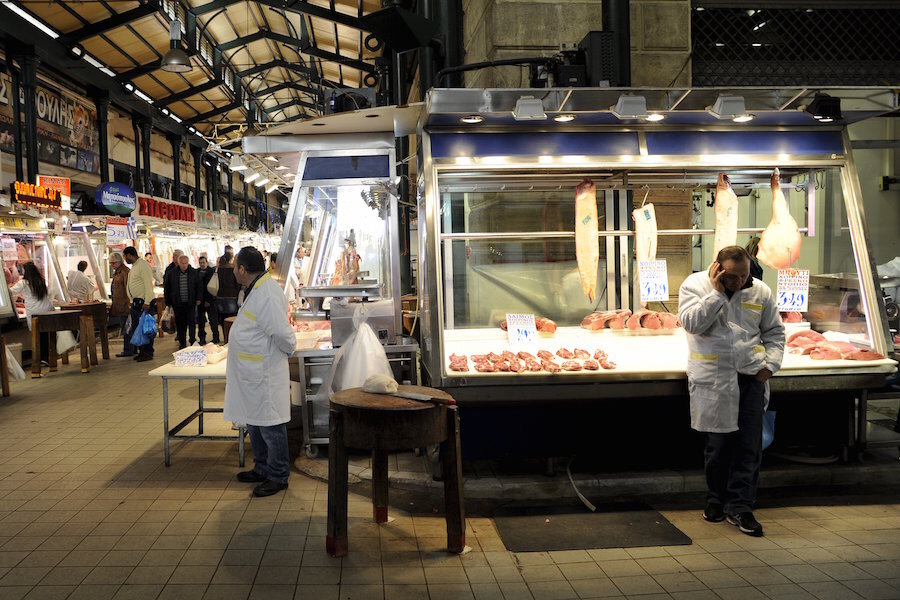Can we eat meat and still save the environment?
Loading...
Our global food production system—which includes, in addition to crop farming, raising livestock and deforesting lands to grow livestock feed and other crops—is responsible for about a quarter of the greenhouse gases produced by human activity that are warming our planet.
As human populations and incomes continue to grow—along with demand for more meat, milk and eggs—across the developing world, scientists estimate that if agriculture were to conduct business as usual while other sectors reduced their emissions, agriculture’s share of human-induced greenhouse gas emissions could double to 50 percent by 2050.
That's a figure we cannot afford. And we don’t have to.
The prospect of such a frightening scenario for agriculture and climate change compels us to increase significantly our investments in research. We need agricultural research to develop new ways to produce much more food with much smaller environmental footprints. In particular, we need to reduce the levels of greenhouse gases that our crop and animal farming and deforesting are generating today.
The recent French-government-led 4P1000 initiative to increase soil carbon, in which CGIAR partners with French research institutes, seeks to reduce greenhouse gas emissions as well as to help farmers adapt to climate change and increase ecosystem resilience. Yet this mostly focuses on cropland, pasture and forests, not on livestock.
Should we still worry about the impacts of rich people over-consuming meat? Yes. Most agricultural greenhouse gases come from livestock mostly from methane and nitrous oxide emitted from livestock manure and the digestive process of cattle, sheep, goats, camels and other ruminant animals, which have multi-chambered stomachs (rumens) where micro-organisms break down tough cellulose, producing methane as a by-product. The adverse climate impacts of releasing both methane and nitrous oxide into the atmosphere are far greater than those of carbon dioxide.
Should we also still worry about the impacts of poor people under-consuming meat? Yes. Across the world’s food-challenged regions, the sustenance provided by livestock—milk, meat, eggs—is critically important. For most poor Africans and South Asians, for example, there are simply no alternative foods that can supply anywhere near the same level of protein and micronutrients. (To get the same amount of vitamin A in just 100g of sardines, you would have to eat 17 bananas!) Animal-source foods are particularly important for infants between weaning and two years of age. Even modest amounts of animal-source foods would save many of them from stunting, ill health, and death due to malnourishment.
On a recent visit to the Mazingira Centre (‘mazingira’ means ‘environment’ in Swahili), at the International Livestock Research Institute (ILRI), a CGIAR centre based in Nairobi, Kenya, I discovered two things. First, CGIAR is taking the issue of greenhouse gas emissions from smallholder livestock production very seriously in Africa, where ruminant animals are a main livelihood and source of income for poor people but produce 30 percent or more of the continent’s total greenhouse gas emissions. With the population set to soar, there is a huge opportunity to intervene and bring down these emissions whilst ensuring food and nutrition security. Second, even though ILRI’s Mazingira Centre has been operating for less than two years, its initial findings are highly promising both for meat eaters in rich communities who care about the planet and for smallholder livestock farmers in Africa who are ambitious to rise out of poverty.
Livestock production contributes to greenhouse gas emissions in three major ways and the Mazingira Centre is investigating ways to mitigate the emissions from each of these.
Storing rather than releasing carbon:
Greenhouse gas emissions from pastures and planted forages and crops used to feed cattle and other ruminants may be reduced by adopting alternative farming and herding practices that avoid the release of these gases and, even better, store carbon in soils; such solutions are being proposed in the 4P1000 initiative.
Raising ruminant productivity:
The gas emissions from the specialized ‘enteric fermentation’ digestive process in ruminant animals are difficult to reduce in absolute terms, even via improved feed, but alternatives exist. One possibility scientists are researching is to raise smaller types of cattle (goats, sheeps, etc.); these not only emit fewer greenhouse gases but also better tolerate climate variations than larger cattle. The biggest opportunity yet seems to be increasing the milk and/or meat productivity of the animals, which can significantly reduce the amount of greenhouse gas emissions per kilogram of meat or litre of milk produced.
Developing feeds that reduce emissions from manure:
Initial findings by researchers at the Mazingira Centre suggest that the most promising technique is likely to be developing alternative animal feeds, particularly those making better use of African crops that lead to reduced methane and nitrous oxide emissions from manure dropped in pastures.
It’s good news for the world’s climate-concerned meat eaters and milk and dairy consumers that new ways are being explored to greatly reduce greenhouse gas emissions from meat and milk production. It’s even better news for Africa’s small-scale livestock producers, who will be better able to increase their incomes and food from livestock production without speeding global warming.
This article first appeared at Food Tank.







